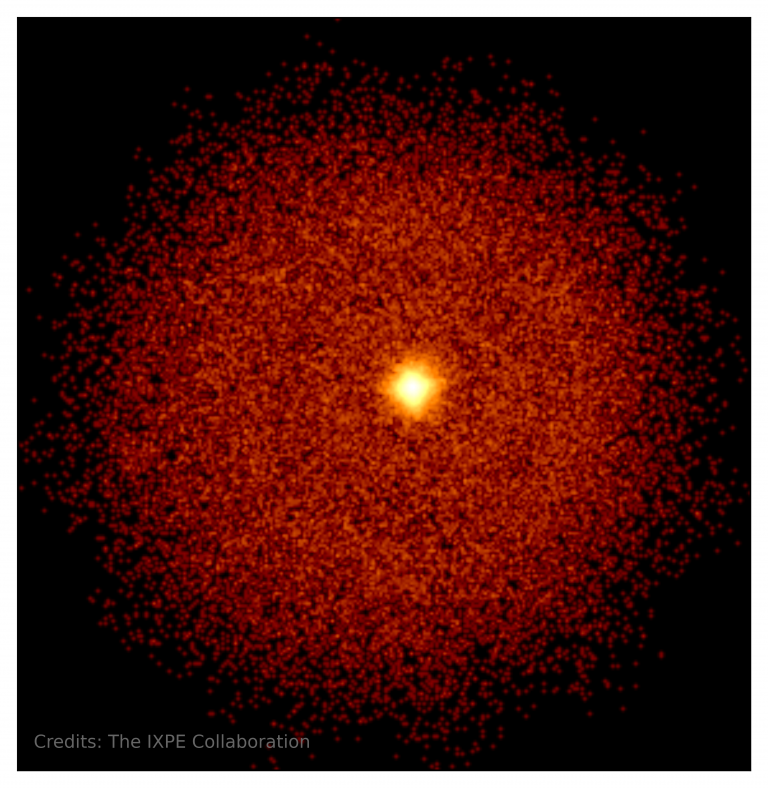NASA's IXPE telescope sees aftermath of powerful explosion in deep space

The Imaging X-ray Polarimetry Explorer (IXPE), a partnership between NASA and the Italian Space Agency, recently observed the aftermath of a powerful cosmic explosion called a gamma-ray burst, dubbed GRB 221009A.
Gamma-ray bursts (GRBs) are short-lived bursts of gamma-ray light, the most energetic form of light. Observing an unplanned target is a daunting ask for space-based telescopes like IXPE.
The record-breaking GRB was observed by the agency's Fermi Gamma-ray Space Telescope and Neil Gehrels Swift Observatory in October 2022, following which Michela Negro, a postdoctoral research assistant at the University of Maryland Baltimore County and NASA's Goddard Space Flight Center in Greenbelt, Maryland, and her colleague started doing the math to see if it might be possible to catch polarized X-rays with IXPE.
Astronomers believe that another GRB this bright may not appear for decades.
"It was at least 10 times brighter than the previous record-holder, GRB 130427A,” said GBM Principal Investigator Colleen Wilson-Hodge at Marshall whilst noting that scientists observed an unusually bright and long-lasting afterglow from the burst.
Hey IXPE, take a look at this!After our Fermi telescope and others spotted a record-breaking gamma-ray burst in October, the IXPE team quickly pointed the observatory's unique X-ray vision toward the powerful event before it could disappear. Read more: https://t.co/dT1NLYHanE pic.twitter.com/zr8Ptx2dO3
— NASA Universe (@NASAUniverse) December 22, 2022
According to a blog post by NASA, the signal, originating from the direction of the constellation Sagitta, had travelled an estimated 1.9 billion light years to reach Earth. Astronomers think it could be the birth cry of a new black hole that formed in the heart of a massive star collapsing under its own gravity.
The light from this powerful ancient explosion brings with it new insights into stellar collapse, the birth of a black hole, the behaviour and interaction of matter near the speed of light, the conditions in a distant galaxy, and much more, the agency said in a statement.










